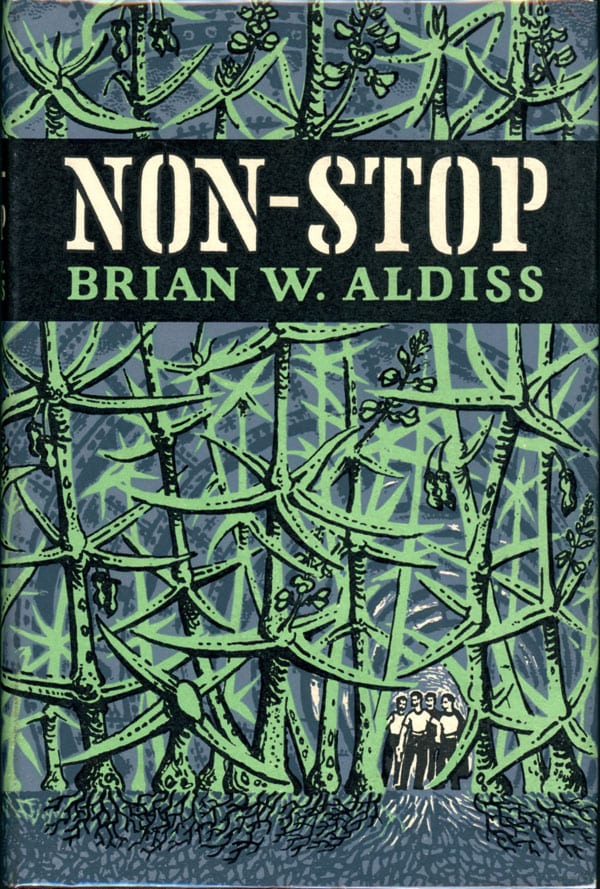It's Wednesday, August 9th--how do you plan to celebrate McG's birthday? Well, before you have to decide between Offspring music videos and Terminator: Salvation, why not check out Brian Nicholson's sterling review of The Academic Hour, the latest graphic novel by Keren Katz?
"The relationship between the written text and the accompanying images consummates itself as comics largely through implication, which is true for what happens between the characters as well. The book is essentially devoid of any explicit content, even bad language. It is functionally all-ages-appropriate but for how deeply weird it is, and how confusing it would be to someone without the experience to contextualize it. I connect it to comics history in a very particular way. Maybe I'm stretching, and only thinking about this because of the author's name, but the relationship between the two main characters is sort of like that between Krazy Kat and Ignatz Mouse, if Ignatz didn't throw bricks, but rather used them to build elaborate architecture."
Hey pal. Bill Bellamy's starring turn in the Fastlane pilot ain't going anywhere. Sit down for a spell.
ELSEWHERE:
The PEOW twitter feed claimed that they've never received any love from "that site", so I thought i'd remedy that by telling you that they're having a party for a comic tonight at Brooklyn's own Desert Island. From what it says on their website and on the Facebook event page, the book--Thu Tran's Dust Pan--is about a cat who is also a living dustpan. I was going to ask them why they think they hadn't gotten any love from The Journal, and then I was gonna try to figure out where Dan is and ask him, and then without getting permission from either party, post both responses. But I think I know why without even trying: the book looks like it is cute, and Dan doesn't like things that are cute, unless they are by people who are dead or by people who made them cute on accident because they are crazy. Now, me personally? I haven't seen a whole lot of what PEOW puts out--they got going on the tail end of my time in retail, and I quit spending money on comics and graphic novels five minutes after my wife said that her water broke--but what I have seen, I thought was pretty strong work by people with a solid sense of color and design. It's cute, yes, but I don't think that has to be a derogatory term--cutesy would be the one I would use to disparage--oh, you know. Comics about overly emotional baby dragons that are terrified 0f being socially awkward at rooftop parties. Comics where things that look like sweaty babies carry overstuffed suitcases around airports staffed by giraffes. I guess it's a fine line between that and a cat who is a dustpan, but you know it when you see it.
If you're interested in unraveling the story surrounding the recent Fantastic Four drama, you can read this article at Newsarama, which is the source of a quote that has launched coverage at a lot of other culture and entertainment websites, places like Slashfilm and IGN and--so on, etc. Basically, noted C-student Johnathan Hickman confirmed what everybody assumed all along, which is that they cancelled The Fantastic Four comics not due to the sales of The Fantastic Four comics, but due to the mismanagement of the intellectual property that is the Fantastic Four by Fox--i.e., all those movies that people didn't enjoy. Not enough drama for you? Okay, then go and read this piece by Rich Johnston, which is partly about how long he has been covering this particular story (a long time) and how long he has been getting shit on by Tom Brevoort about this particular story (also a long time). Before you click through, you should know: the other half of Rich's story is about how much it annoys him that the Newsarama guy I linked to first doesn't read Bleeding Cool articles. If, after all of this, you still want more, you can go and follow these guys on Twitter, where I believe they may still be fighting. I tapped out after the last part though.
(Actually, I tapped out before it even started, because there's a scene in that last Fantastic Four movie where Doctor Doom wanders the hallways and uses his telekinetic powers to make the heads of terrified human beings explode, and I thought that scene was way cooler than anything I've read in a Fantastic Four comic, because it's a scene from Akira, and Akira is a lot cooler than the Fantastic Four.)
Marvel isn't all bad though! They're going to reprint those old Joe Casey/Ladronn Cable comics, apparently. You ever read those? No you didn't. Stop lying!
Over at 50 Watts, they're throwing up all kinds of work by Antonio Rubino. As with most of what I've seen, it's untranslated. NBD, bud. Still rules.
Robert Kirkman told some people that he had figured out the ending of The Walking Dead comic books and that he was working towards that ending, you can read about that here, although I just told you everything you would get out of the piece. It reminded me of the one time I have heard that guy speak, when I was being paid to cover a comic book convention for some website. During the always interminable Q&A session at the end, some mouth-breathing cretin cosplaying as Seth stood up and asked if somebody besides Kirkman knew the ending of Walking Dead, in case anything happened to him, like a car wreck. I think that was the phrase he used-- "like a car wreck". Kirkman, God bless him, said, "Man, I don't give a shit if people don't get to find out how Walking Dead ends if I die in a car wreck." That was before the television show, too. I imagine it's even worse, now. Success is a prison!






























